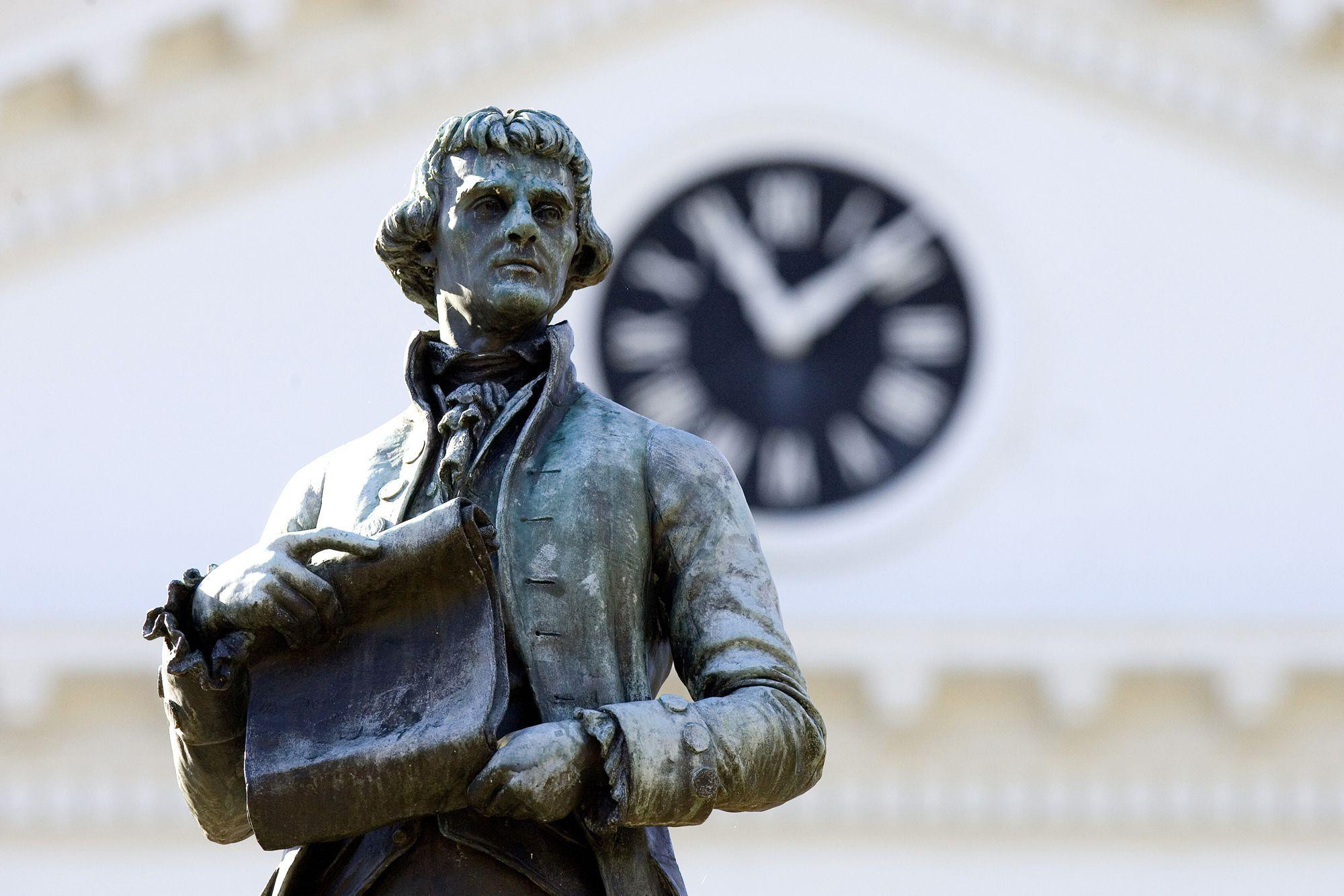The University of Virginia is again among the top three public universities in the nation in the latest “Best College Value” rankings issued Wednesday by Kiplinger Personal Finance magazine.
The magazine lauded UVA’s “blend of academic quality and affordability” in ranking the University No. 3 among public institutions and 42nd among all U.S. colleges and universities. UVA has ranked among the top 100 overall in each of the 15 years that Kiplinger’s has published rankings, selected from a pool of more than 1,200 schools nationwide.
“This latest ranking reaffirms UVA’s position as one of the greatest values in American higher education,” UVA President Teresa A. Sullivan said. “Because of the quality and affordability of our academic programs, our high graduation rates and our commitment to developing ethical leaders, we offer students a unique value proposition that distinguishes UVA from many of its peers.”
The magazine blends measures of quality, weighted 55 percent, and measures of affordability, weighted at 45 percent.
On the quality side, UVA’s 87 percent four-year graduation rate is easily the best among the top 100 public universities, which the magazine notes “(spares) families the expense of an extra year of attendance.”
On the affordability side, the average annual cost of attendance for in-state students of $6,942 – after need-based financial aid – is third-lowest among the top 100 public schools.
UVA, which offers admission on a “need-blind” basis, is one of two top-100 publics that meet 100 percent of each student’s demonstrated financial need. The University’s financial aid packages do not leave students under a pile of crushing loan debt after graduation, either. The University’s Affordable Excellence initiative reduced the maximum amount of need-based loans for in-state, low-income students by $10,000 over four years, from $14,000 to $4,000. The maximum for all other Virginians with need was slashed from $28,000 to $18,000.
The publication also includes a new measure this year, a “Salary Yardstick” that provides a limited view of graduates’ potential earnings. The figure – calculated based on federal data reflecting a federal-aid recipient’s salary 10 years after entering college – does not consider whether the students graduated or went on to graduate school, nor does it take into account their fields of study. Even with those limitations, UVA ranked seventh among the top 100 public universities at $58,600.
UVA fares well in many major college rankings. Princeton Review rated the University as the nation’s best public institution in its “Colleges That Pay You Back” best-value ranking released in February, and U.S. News ranked UVA as the No. 3 public in September. Forbes made UVA its No. 2 public University in July, and a new attempt at a comprehensive ranking by Charlotte, North Carolina-based The Business Journals, publisher of 40 U.S. newspapers, also placed UVA at No. 3 among publics in February.
At No. 3 on Kiplinger’s list, UVA leads five Virginia universities among the top 80 public institutions. The College of William & Mary was No. 10, followed by Virginia Polytechnic Institute and State University (No. 27), James Madison University (No. 34) and Christopher Newport University (No. 80).
The top 10 publics: the University of North Carolina, Chapel Hill; the University of Florida; UVA; the University of California, Berkeley; the University of Michigan; the University of California, Los Angeles; the University of Maryland, College Park; the University of Wisconsin-Madison; the University of Washington; and William & Mary.
The complete Kiplinger rankings can be found online, where they are sortable by state, admission rate, average debt at graduation and other criteria for all schools, plus by in-state and out-of-state cost for public universities. There is also a slideshow of the top 10 schools in each category and an FAQ about the ranking methodology. The rankings will be published in the February issue of the magazine, available on newsstands Jan. 5.
Media Contact
Article Information
December 16, 2015
/content/kiplingers-ranks-uva-among-best-value-public-universities

